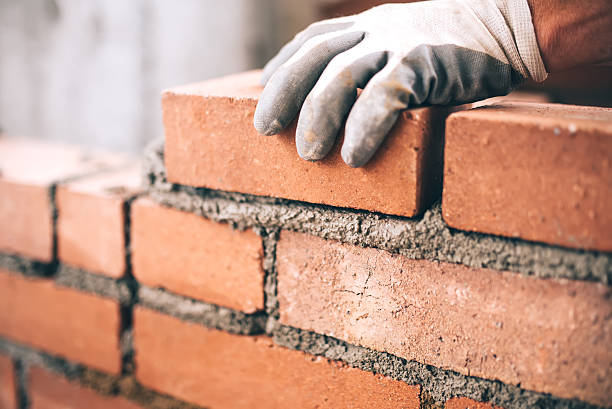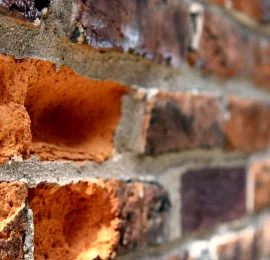Opening the Keys of Lasting Stonework Building And Construction Practices for Eco-Friendly Buildings
Amongst the myriad approaches to eco-friendly building, sustainable masonry building stands out as a time-tested and durable approach that holds a riches of untapped capacity. From the choice of materials to ingenious building and construction techniques, the secrets to attaining sustainability within masonry construction are diverse and interesting.
Advantages of Lasting Stonework Building
Welcoming lasting masonry building techniques not just decreases environmental influence but additionally supplies long-term economic advantages to home builders and communities. By using materials like recycled blocks, blocks, and rocks, building contractors can dramatically decrease the carbon impact of their jobs while advertising source efficiency. Additionally, sustainable stonework building strategies, such as proper insulation and thermal mass homes, can improve energy performance within buildings, causing decreased functional costs with time.
In addition, the resilience and durability of masonry structures add to long-term economic advantages. Buildings constructed utilizing lasting masonry techniques commonly call for less repair and maintenance, equating to cost financial savings for contractors and residential or commercial property owners. The longevity of stonework materials likewise makes certain that structures remain stable and secure, reducing the demand for frequent improvements or replacements.
Eco-Friendly Masonry Materials
Making use of green masonry materials is an essential action in the direction of boosting the sustainability of building and construction techniques and decreasing environmental effect while making the most of long-lasting financial benefits. Sustainable masonry materials are sourced, generated, and utilized in a manner that minimizes general ecological effect. Sustainable concrete blocks include recycled aggregates and may feature improved insulation homes, adding to power efficiency in buildings.
Moreover, natural materials like adobe, rammed planet, and straw bales provide exceptional thermal mass residential or commercial properties, lowering the demand for home heating and cooling energy. These products are frequently locally available, advertising regional economic situations and reducing transportation-related carbon discharges. By selecting environment-friendly stonework products, building and construction tasks can substantially decrease their ecological footprint and add to the production of healthier, extra sustainable developed settings.
Energy-Efficient Stonework Strategies
Energy efficiency plays an important duty in enhancing the sustainability of masonry building methods. One crucial energy-efficient stonework strategy is the use of thermal mass, which includes including thick products like concrete or brick into the building's structure to soak up and save warm.

Advancements in Sustainable Masonry
Recent developments in lasting stonework practices have actually brought around ingenious techniques that are improving the building and construction sector. One such development is the growth of self-healing concrete, which uses microorganisms embedded within the concrete to heal fractures autonomously. This breakthrough not only lowers upkeep costs yet also improves the toughness of masonry frameworks, contributing to their sustainability.
Another significant innovation is the usage of recycled aggregates in masonry building and construction - masonry contractor. By integrating products such as smashed ceramic waste or recycled glass into concrete mixes, contractors can minimize the environmental influence of building and construction projects while keeping structural stability. This method not only draws away waste from land fills but likewise preserves natural deposits, making it a vital advancement in sustainable stonework construction
Additionally, the integration of electronic layout tools, such as Building Details Modeling (BIM), is revolutionizing the way stonework structures why not try this out are planned and built. BIM permits more exact calculations, lowered material wastage, and boosted power performance, eventually leading to more sustainable building methods. These innovations jointly signify an encouraging future for sustainable stonework building and construction in the era of environmentally friendly buildings.
Future Trends in Stonework Sustainability
With the ingenious strides made in lasting masonry methods, the future patterns in stonework sustainability are poised to more change the construction industry. One of the key patterns shaping the future of masonry sustainability is the enhanced integration of modern technology. Improvements such as Building Info Modeling (BIM) and digital fact simulations are being used to maximize stonework building and construction processes, leading to lowered product waste and improved power performance in buildings.
In addition, the advancement of novel lasting materials is readied to play a significant duty in improving the eco-friendliness of stonework construction. masonry contractor. Technologies like self-healing concrete, recycled accumulations, and bio-based binders are gaining traction for their capability to lessen ecological effect while keeping structural integrity

Conclusion
In conclusion, lasting stonework building and construction techniques use many advantages for green buildings. masonry contractor. Advancements in sustainable stonework are continually being created to further improve the environmental performance of buildings.